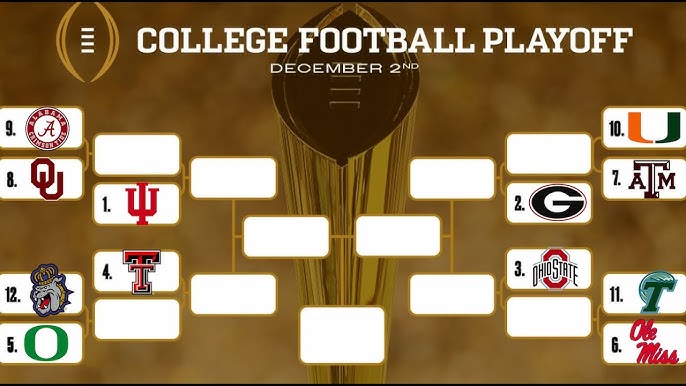
Since the 2024 season, the CFP has operated under a 12-team format.
- Under this structure, five of the highest-ranked conference champions receive automatic bids, and seven at-large teams fill the rest of the field.
- In 2025, a notable change was made: the first-round byes go to the top four teams overall, rather than the four highest-ranked conference champions.
- The CFP schedule has also been cemented, with games beginning mid-December and the championship in mid-January.
These tweaks reflect an attempt to balance access for conference winners and preserve reward for top overall performance.
From Four to Twelve: A Big Step, But Not the Last
The move from four teams to twelve was a major expansion designed to balance access and revenue. Automatic bids for top conference champions, plus multiple at-large spots, created new opportunities for programs outside the traditional power structure. For fans, it meant more meaningful games in November and a postseason that feels closer to college basketball’s March Madness.
But college football is in flux. With conference realignment reshaping the map — the Pac-12 reduced to rubble, the Big Ten and SEC ballooning into national powerhouses, and the ACC navigating its own survival — the playoff’s structure may need to adapt sooner than expected.
The Big Questions
- How many spots should be guaranteed?
Under the current 12-team plan, the six highest-ranked conference champions receive automatic bids, with six at-large berths filling out the field. But with fewer conferences holding true “power” status, there’s pressure to reduce automatic bids to five or even four, opening more room for elite at-large teams. - What role do independents play?
Schools like Notre Dame remain unique cases. They’re playoff-eligible, but under the 12-team model, they cannot earn a first-round bye without a conference title. As independence grows trickier in a super-conference era, the Irish’s place in the system is a persistent debate. - How far will expansion go?
Some administrators and television executives quietly wonder if 12 is just a stepping stone. A 16-team format — mirroring the FCS playoffs — would further increase access and revenue, though critics argue it would diminish the regular season’s intensity. - Who controls the future?
The CFP’s contract with ESPN runs through 2025-26. After that, the playoff could hit the open market, inviting bids from multiple networks or streaming platforms. With billions of dollars at stake, television partners may have significant influence on whether the playoff stays at 12, expands to 16, or reshuffles entirely.
Fans, Coaches, and Players Weigh In
For fans, more playoff spots mean more hope — but also the possibility of playoff fatigue if expansion dilutes the drama. Coaches are split: some welcome broader access, while others worry about the toll of extended seasons on players’ health and academics. Players, meanwhile, have increasingly demanded a seat at the table, raising questions about revenue-sharing and compensation as the playoff grows into an even bigger moneymaker.
Bottom Line
As of late September 2025, the 12-team College Football Playoff is the baseline, but far from assured as a permanent design. Conversations about expansion — to 16, 20, 24, or beyond — are active. Yet with only a few months before decisions must be locked in, much depends on whether the various stakeholders can agree on a path forward.
Author Profile
Latest entries
 NCAAFDecember 9, 2025The Final Four: Meet the 2025 Heisman Trophy Finalists
NCAAFDecember 9, 2025The Final Four: Meet the 2025 Heisman Trophy Finalists TechDecember 9, 2025Top KYC Software Providers in 2025
TechDecember 9, 2025Top KYC Software Providers in 2025 BusinessDecember 8, 2025How to Implement an Effective PEP Screening Process in 2026
BusinessDecember 8, 2025How to Implement an Effective PEP Screening Process in 2026 HockeyDecember 7, 2025Maschmeyer Mutes Sirens: Goldeneyes Secure First Regulation Win with 4-0 Shutout
HockeyDecember 7, 2025Maschmeyer Mutes Sirens: Goldeneyes Secure First Regulation Win with 4-0 Shutout

 Steelersforever.org
Steelersforever.org



